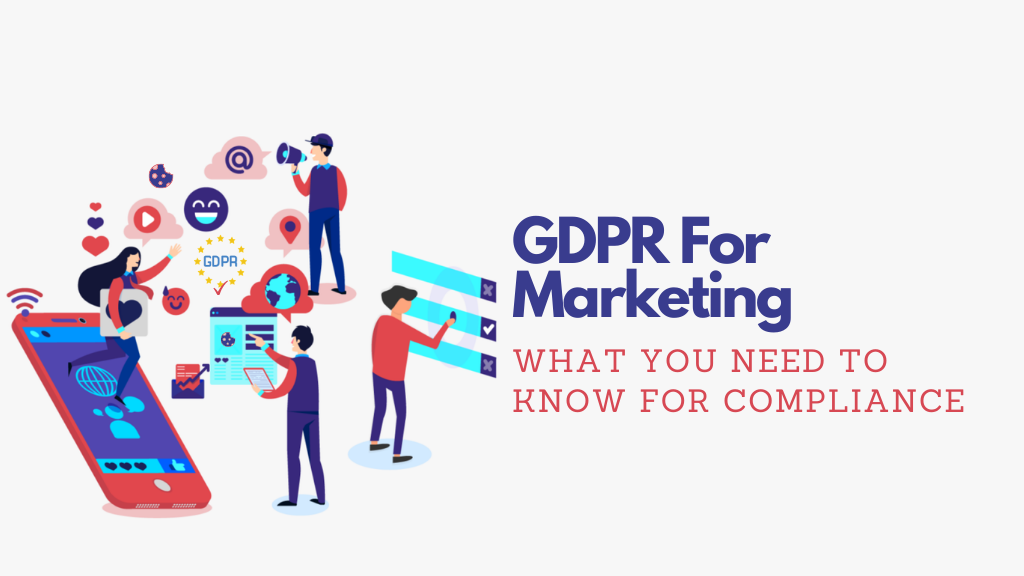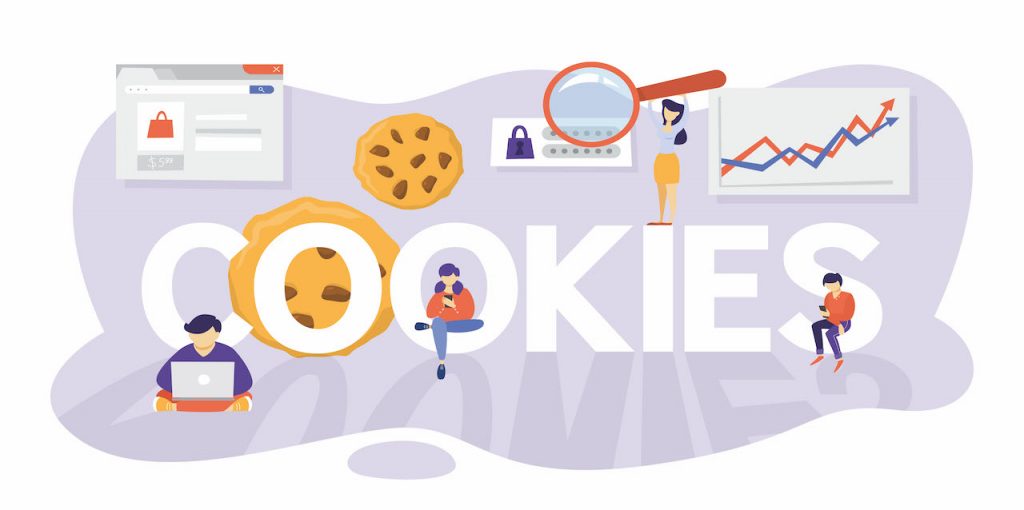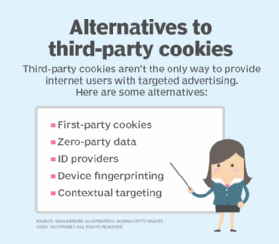
Every morning, tens of millions of people worldwide log on to the internet to visit their favorite websites and consume their allotted amount of online cookies (pun intended).
But did you know that businesses may also use cookies to improve the marketing of their business or website?
Businesses can utilize cookie file information for marketing purposes. The challenge is understanding how and where to acquire it lawfully.
If you violate GDPR, one of the strictest data privacy rules, you might be fined up to € 20 million or even 4 % of your yearly revenue.
Consequently, you must comply with data privacy rules while collecting cookie data.
Before engaging in any marketing operations, including the usage of cookies, there are many considerations to make.
You indeed have several questions, such as what cookie data is and how you can use it to boost your marketing.
Therefore, here is a post outlining the eight best methods to utilize cookie data for marketing purposes lawfully.
Before examining these methods, let’s review the fundamentals.
What is tracking using cookies?

These cookies are tiny files that many websites store on user devices — computers, mobile phones, and tablets — when the user visits a particular page. Cookies are used to transmit information from one website to another. The objective of cookies is to allow computer applications to share user information, such as username, password, name, and address.
There are several sorts of cookies with varying functions, including first-party cookies, third-party cookies, essential cookies, and persistent cookies, many of which are beneficial for marketing.

What are first-party cookies, and why is it important to understand them?
Marketers use cookies to predict the audience’s interests based on a user’s browsing behavior, purchases, and preferences.
Cookies facilitate user-friendly consumer experiences since they remember customers’ passwords and do not remove things from shopping carts when users close their web browsers.
Cookies improve the user experience and allow businesses to collect extensive client data. And understanding first-party cookies becomes important.
First-party cookies are small codes created and saved on a user’s computer that collects information about how they interact with your company’s website. Based on their interest in your website, your company can use this information to create a customised marketing approach.
Cookie usage with data compliance
Website owners who use cookies and collect user information must comply with the data privacy regulations of the states from where their visitors originate.
There are now data privacy regulations in many states. However, others still don’t.
If you store the data of a visitor from a state with data privacy regulations, you are essentially required to comply with them.

Because cookies gather personal information, organizations must comply with the GDPR and FTC regulations in the European Union and the United States, respectively. These regulations mandate businesses to disclose to consumers the information they gather and how they use it; thus, many websites now post disclosures to users upon entering a site. However, many users consent to the cookies to close the pop-up without ever reading the disclaimer.
Many organizations are reconsidering their usage of third-party cookies due to customer privacy and openness concerns. Safari and Firefox already block them, and Google wants to eliminate the cookies by 2023. Some businesses may be alarmed by Google’s intention to phase out third-party cookies but might examine alternate choices for their post-cookies marketing strategy.
The necessity to gather user data and guarantee compliance with these rules derives from the fact that cookies are helpful for a variety of intents, including:
- Monitoring how people traverse your site
- Maintaining a record of their choices
- Keeping a record of their login credentials and more

Why are these objectives significant? They engage in several marketing efforts. Let’s examine how businesses may utilize the acquired data for marketing purposes:
8 ways to use cookie data for marketing purposes while maintaining compliance
1. Understand user behavior by utilizing first-party data
Begin with understanding first-party cookies. First-party data refers to any information you gather about your consumers through your websites or applications.
First-party data may assist you in comprehending how visitors utilize your website or application.
This information helps you design a more user-friendly website and attract more clients.
For instance, if you observe that users click the “buy now” button on your website but do not complete the transaction, you may be able to utilize first-party data to pinpoint the problem by analyzing their activity.
This might be attributed to varied factors, including the user’s intention to purchase more. They want to buy the product displayed on the screen, but they also want to purchase something else.
If your website’s user interface prevents purchasers from doing so, it is not user-friendly. This may be determined with the aid of cookies.
Change the “purchase now” button to “add to cart” to make it more user-friendly.
2. Expand your audience by tapping into third-party data
Data from a third party is data that is not your own.
Third-party data includes, but is not limited to, information such as census statistics, public records, or data from other firms that have collected and sold information about their customers for advertising.
You may target a broader audience and reach more individuals with third-party data.
You may reach a broader audience using demographic, psychographic, or geographic data to enhance brand recognition.
For instance, operating an online clothes store may utilize third-party data to reach individuals in various areas. Your prospective consumers may be dispersed across the state or the globe if your business is large enough.
To do this, you may design a customized advertising campaign based on specific demographic or psychographic data to generate advertisements that are more relevant to the users. These data are accessible via third-party cookies.
3. Target consumers who have already shown an interest
With cookie data, you may determine if visitors were interested in your goods but did not make a purchase. You can retarget them. It is beneficial for online firms and brands with a lengthy sales cycle.
Retargeting is useful when you want to remind consumers that something is coming soon or when you want to contact those who have previously expressed interest in your product.
For instance, a clothes retailer may wish to retarget those who put a specific item in their shopping cart but exit the website without concluding their purchase.
Retargeting may be weird if done improperly, so be cautious not to go over the line.
If a person has previously expressed interest in your product, it is OK to retarget them with adverts as long as you do so with caution.
Previously, they may have left your site due to a lack of product understanding; thus, you may utilize advertisements to educate them this time.
4. You should use geo-tracking information to determine the best locations to place ads
When marketing online, you have the option to target specific geographic regions with your advertisements. These marketing tools will help.
Cookies can assist you in determining the location of your site’s visitors so that you can display relevant advertisements.
Cookies can also track visitors’ proximity to specific sites. This data might assist you in determining where to market your products or services.
5. Measure the performance of your advertising initiatives
It might be tough to evaluate the performance of your advertising activities. Cookies allow you to determine which advertisements perform best and attract the most consumers.
It enables you to design more successful advertising campaigns and spend your marketing money more efficiently. You may also use advertising tools for maximum reach.
Place a tracking pixel on the pages of your website that display advertisements.
6. Inform you of the buying intent of your site’s visitors
Marketers want to know when prospective consumers are prepared to purchase. This knowledge can assist you in developing a more robust sales pitch.
Cookies may monitor when visitors are seeking particular items and services, how much they are prepared to spend, and what they are having difficulty with.
This information can assist you in crafting more effective sales presentations and engaging your site’s users before they are ready to purchase.
7. Monitor website traffic and its behavior
Website owners can collect information on how users utilize their sites.
Using cookie data, you may monitor the following:
- Visitor circulation
- Their time invested per page
- The route that visitors take to your webpage.
- The kind of browser
- Including the operating system they employ
This data allows you to determine which material is the most popular and which drives users away.
This information is also valuable for enhancing your website’s design and marketing approach.
8. Make use of customer-visitor behavior analysis for targeted advertising
Cookies offer more relevant advertisements to visitors, helping you increase engagement and purchases.
You may design a more effective marketing plan by monitoring which advertisements your visitors respond to the most and which items and services they are interested in.
You may monitor the online activity of your visitors to see if they are interested in specific areas, such as sports or entertainment.

Speculatively…
With Google’s announcement that it would stop supporting third-party cookies in the Chrome browser by 2023, businesses that rely on collecting user data to tailor ads should consider alternatives.

Third-party cookies provide advertisers with a deeper understanding of their website users. While many businesses primarily rely on the data collected by third-party cookies for advertising purposes. They should prepare their marketing, sales, e-commerce, and product development teams and explore alternative monitoring solutions for their post-cookies marketing plan. Potential alternatives to third-party cookies include multiple ID providers, first-party data, subscription bases, device fingerprinting, and contextual targeting.
Final words
Marketers may benefit much from cookie data, but they must be aware of any restrictions on their usage.
They are simple to implement and provide valuable information for marketing initiatives.
Thus, if you know the data regulations, you must follow and the many methods you may use this data, you can elevate your marketing efforts to the next level.



